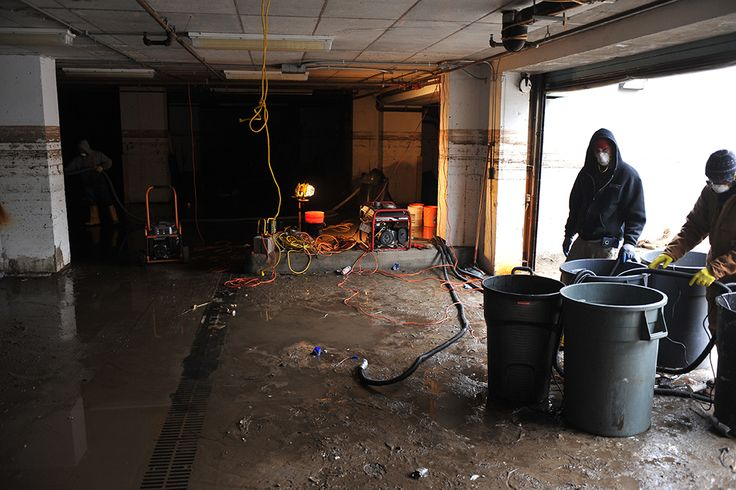Water damage is one of the most stressful situations that can withstand the owner of a property. Whether a burst pipe, heavy rainfall, or floods, effects can be disastrous – structural integrity, indoor air quality and even the safety of those living. Rapid action is important in reducing these risks, and where insight from experienced water damage experts becomes priceless.
In the central QLD, where the weather conditions can occur and severe storms are not uncommon, it is necessary to understand the importance of rapid response for both home owners and businesses. Why are the steps taken fast after water damage, and what steps should be taken to ensure effective restoration.
Why the immediate response matters
The first 24-48 hours of water infiltration are important. Delay in addressing the problem can lead to many complications:
Structural Damage
The water quickly seeps into the floor, walls and foundations, weakening the construction material. Timber can taunt, the drywall softens and breaks down, and in severe cases, structural integrity is compromised. This damage increases over time, causing repair to become more complex and expensive. Consulting a Water Damage Specialist in the central QLD at the earliest may prevent these issues and ensure that your property is efficiently and safely restored.
Electrical Hazards
Short circuits from the water around the electrical equipment, the loss of electricity and even a fire can occur. For safety purposes, power should be disconnected in affected areas until a professional assessment is made.
Risks of Contamination
Floodwater is probably to carry contaminants like micro organisms, sewage, and chemicals. Even pure water from a broken pipe turns contaminated while left idle for hours. Proper cleanup and disinfecting consequently emerge as the maximum priority.
Acting rapidly prevents these issues from spiraling out of control.
Steps to Take Immediately After Water Damage
A water harm specialist will frequently suggest those steps:
1. Ensure Safety First
Before something else, determine the safety of the affected region. Turn off energy if water has reached stores or appliances, and put on shielding equipment if coming into flooded spaces.
2. Stop the source of water
Find out and keep the source of water infiltration – it is a burst pipe, closed equipment, or flood with heavy storms. Cutting the main water supply will cause more damage.
3. Remove extra water
The longer the water remains, the more damage will be done. Professional powerful pumps and extraction machines extract standing water quickly. Homeowners can temporarily solve small leaks with mops, towels, or wet/dried vacancies.
4. Start drying immediately
More visible than drying is more than draining water – this is to remove hidden moisture within the walls, floors and cavities. Professional technicians use industrial air movers, dehumidifiers and moisture meters, which avoid the development and structural collapse of moulds.
5. Grinding and deodorize
Following the drying, everything affected must be clean and disinfectant to destroy the bacteria and remove the odor. Infected materials can sometimes be discharged, but the rescue material is cleaned and treated with deodorizing measures.
The role of a specialist in the damaged water
Most property owners reduce the complexity of the restoration of water loss. Water damage will add experience, cutting edge tools and industry skills to make the specialist process safe and efficient.
Why are his services so important here:
- Advanced Evaluation: Experts make widespread assessments with thermal imaging and moisture detection tools to detect hidden water pockets.
- Advanced machinery: From high-humidity dehumidifiers to hepa air scrubbers, professional machinery speeds up and avoids secondary damage.
- Mould Remediation Skills: Professionals handle antimicrobial technologies and antimicrobial technologies safely to kill spores.
- Restoration strategy: In addition to drying and hygiene, they develop a repair plan from changing wet drywalls to restore the floor.
This degree of accuracy decreases significantly for residual moisture and long -term issues.
Time is money: cost of delay
Delay in treatment of water damage can increase the cost rapidly. Drying and cleaning can be noted that simple problems can be comprehensive repair, such as:
- •Structural element replacement
- •Full scale mould remedial services
- •Re -formation of electrical systems
- •Floor and subfloor replacement
Insurance claims can also be more complicated if action is not recorded on time. Timely response not only reduces expenses, but also facilitates the process of easy claims.
Prevention of future water damage
Although emergency cannot be estimated in every case, preventive strategies reduce the possibility of major damage:
- Regular maintenance: Check pipes, roofs and gutters for leaks or barriers.
- Install water alarms: Alarms that leaked in their early stages have the ability to prevent minor issues from major problems.
- Proper grading: Maintain proper yard grading to keep water from pooling on the foundation.
- Backup Power Solutions: In Hurricane-Economic areas, a backup generator can maintain pump operation during power outage.
Readiness pays to reduce both stress and repair expenses.
Final Thoughts
Water damage will not wait – nor should you do it. Quick action is the best single tool to defend your property, health and pocketbook. Premature treatment is the response, from preventing structural decline to preventing mould development and contamination.
Water restoration expertise under central QLD tension is the most important factor for restoration effectiveness of that time. Fast, systematic action not only reduces damage, but also takes the process of treatment in a hurry, life is normally returned normally.
